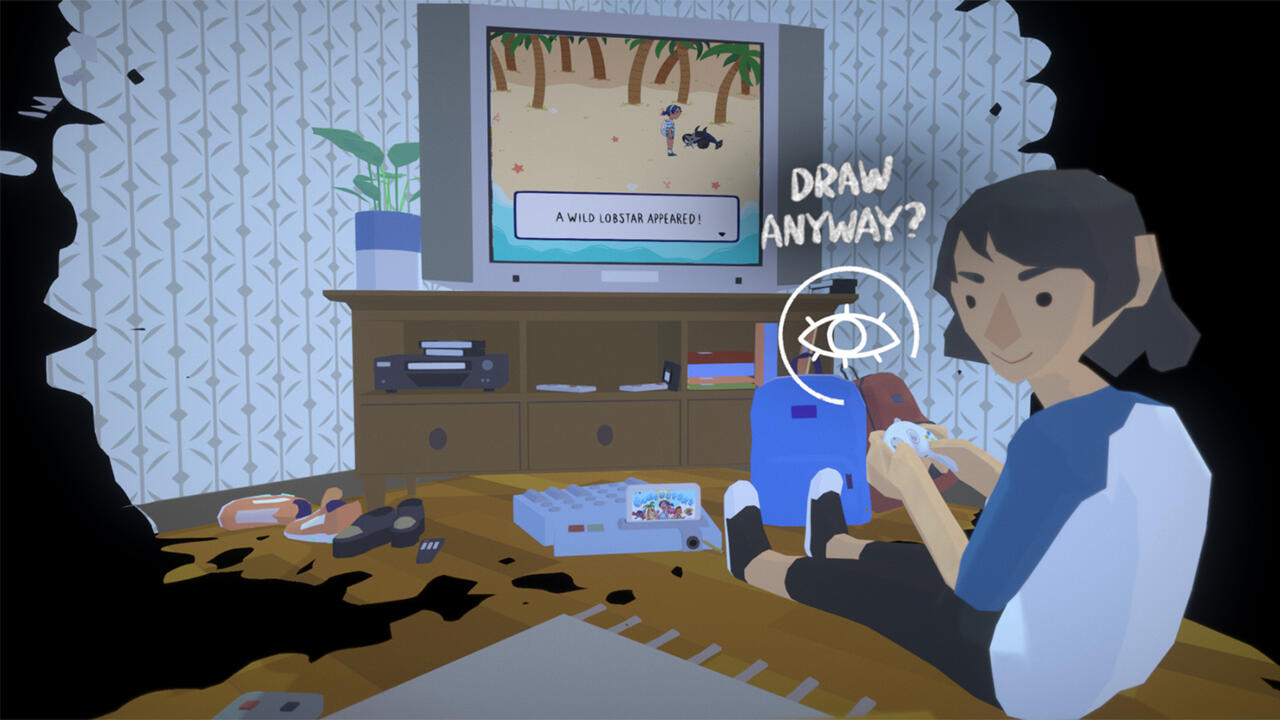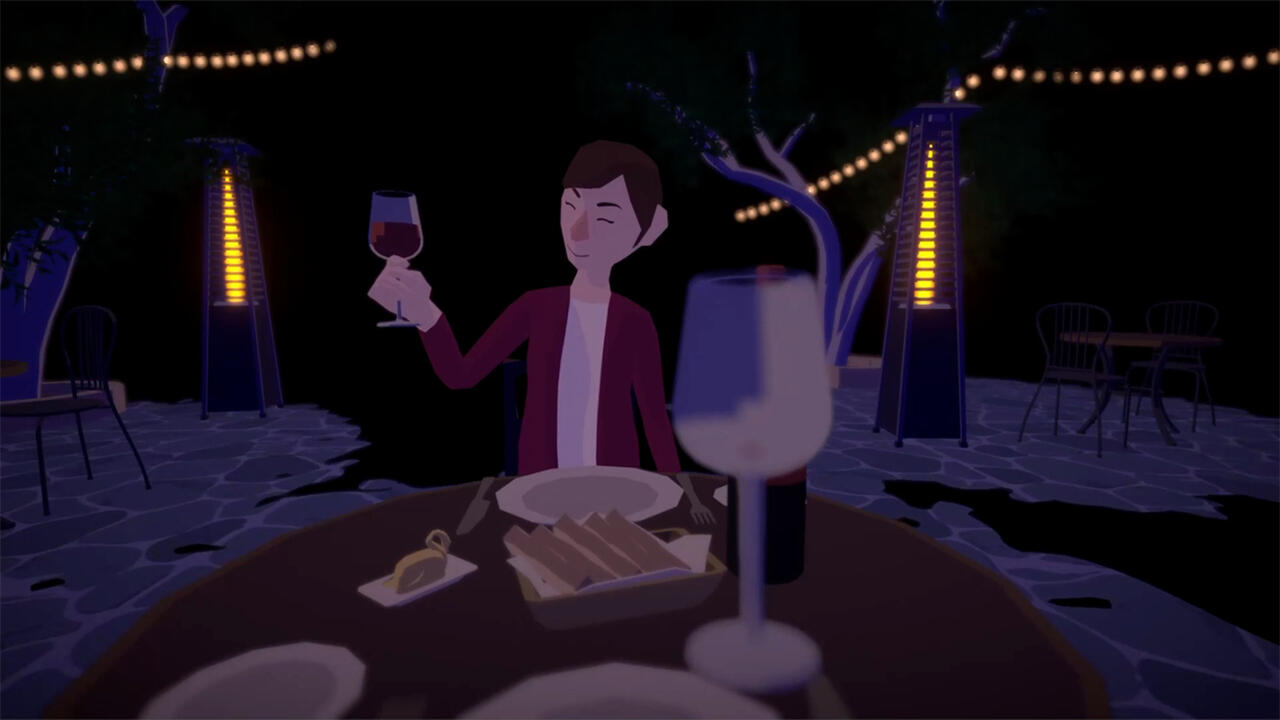“But there was an accessibility issue because it was exclusively on PC.
There was the webcam element.”
You need a javascript enabled web client to watch videos.

Now Playing:Before Your Eyes | Official Game Trailer | Netflix
Want us to remember this setting for all your devices?
GameSpot: How does the game functionally work on a mobile machine?
Do you hold it sideways?

Do you play like you’re taking a selfie?
That’s something that we wanted to take advantage of about phones.
Of course, phones have very high-quality front-facing cameras in them now.

Graham Parkes: We always really wanted to come to mobile.
The face detection on just any iPhone is really sophisticated.
We always just knew that it was such a natural fit.

So it’s just a really natural fit.
And it’s all the result of the improved cameras of mobile devices?
There’s also an environmental factor of where you’re playing a mobile game.

Your arm isn’t that long.
You’re getting a pretty good image of your face.
That’s quite common and that leads to a less optimal experience.
Oliver Lewin: Everybody should be able to play things that way, I think.
Graham Parkes: You do still need some light on your face.
But I will say, it’s also the consistency of cameras.
We partnered with a studio called BKOM on the mobile release.
When we were developing it for PC, there were just so many different webcams.
You mentioned face tracking.
Are you taking advantage of that?
Graham Parkes: The software can do all that stuff.
Early on, we considered for a while making it detect if you’re smiling.
It can tell if you’re smiling or if you’re frowning.
It can do things like nodding or shaking your head.
But other devs should be aware of this.
It can really do so much.
Just a traditional webcam really can function as a totally new way to control games.
Is there controller compatibility?
When you’re looking around in-game, that’s something you’re kind of swiping around.
The controller compatibility thing is interesting.
I’ve never used one.
I think the team at BKOM has tested it.
That would work… remapping the camera controlling and the touchscreen to the joystick.
That’d be an interesting way to play but I haven’t done it yet, myself.
It was a little closer to games that inspired us like Firewatch that have player movement.
Having to do twin-stick movement with the little joysticks in the corner of the screen just feels so unnatural.
But because our screen is locked off, that little drag to look around thing?
That’s so natural–so immediate.
It doesn’t feel at all finicky.
So, it was a very quick translation to mobile.
How did the partnership with Netflix come about?
Graham Parkes: That was really brought on through Skybound, our publisher.
Apple Arcade obviously came out as one of the places where you could do that.
It was always this thing where it was our goal to get it onto phones.
It was really just a kind of a fortuitous thing because we always wanted to do the mobile version.
“This part’s not sad enough?
We have to turn up the sad on this part.
We’ve got to turn it down here.”
How does that work?
Graham Parkes: That’s a great question.
At least, I’m sure Graham did in a way when he was writing.
There are bad words that you don’t want to hear too much.
You don’t want to hear people say they’re confused too much.
You don’t want to hear people say they’re frustrated too much.
you’ve got the option to kind of see on the screen like, “Oh, okay.
Graham Parkes: Yeah, it’s an interesting thing.
I think that to make a story work, it’s a very structural thing.
That was really something that I think was unique about our process.
You know, this started as a student project.
So we had this long time where no one was full-time on it.
We didn’t have a full team at that point.
It really was me, Will, the creator, and Oliver Lewin.
We were the only guys left, really.
We’re just going to work on the story and the script I’m going to write.”
So I would go write, I’d bring it to Will and Oliver.
They would respond to what I was writing and we all sort of figured out what the story was.
And we had, I think, four or five months where really no one was building anything.
We were just working on story.
I think that’s something that you would see a lot more in film development.
But it’s very rare in games because you often have a full-tilt team.
So you’re building vertical slices and the writing’s catching up and everything’s happening at once.
Our producer at RYOT, Jake Sally, would read early drafts.
So by the time that we hired up a full team, the sort of emotional element of it…
I remember Jake saying, “Oh, it made me cry.”
The second time he read it or something like that.
I think it’s so interesting because I remember when it was just a script.
But for a long time, I think the focus was more so on keeping the subtlety there.
There’s something when there is a little level of restraint there.
So that, when you got to the sad part, you weren’t already exhausted.
Do you see yourself continuing to develop games with unique control schemes?
Or do you think you will make something more traditional in the future?
Oliver Lewin: We do see ourselves continuing on with exploring the alternative cameras and controller jot down stuff.
We’re still really excited about that.
We feel like there’s a lot of meat left on the bone.
I think we also consider ourselves capable of doing more traditional controller input, too, though.
But right now, we’re still very excited about what we started with Before Your Eyes.
I think we’re that spirit.
So we want to keep with that.
We want to keep being a little daredevil in what we make a run at do.
I think, as emo game lovers, that’s what we get excited about.
What do you think of PlayStation VR 2’s eye-tracking tech?
Oliver Lewin: I think it’s so exciting.
Graham Parkes: We’re big Sony fans.
So when we heard, it was exciting news to us.
This was eight years ago.
But he already saw into the future with eye-tracking.
It’s on phones, it’s on traditional webcams, and the future of VR will have eye-tracking.
Even at that point, there were these conversations.
We made this 10- to 15-minute version of Before Your Eyes.
The eye-tracking within a headset is really perfect because the conditions are all there.
We don’t have to deal with stuff like lighting position.
And when we built it, it was so natural and so magical.
We are really excited about VR and eye-tracking and we do have plans to develop in that space.
Oliver Lewin: Exactly, exactly.
That’s why I wear sunglasses most days.
Graham Parkes: It was so funny.
We were developing that VR version for South By Southwest and it was right at 2020.
That South By Southwest canceling was one of the big canaries in the coal mine of COVID.
So we’ve got to keep developing."
It was very rare to have any headset with eyetracking.
Then the idea of festivals disappeared for a while, basically.
I think it’s going to be the future of consumer VR.
They will all have eye-tracking, is the assumption.
You shouldn’t have put on that VR helmet."
We didn’t do that.
Some of our ideas are really stupid.
Before Your Eyes is available now on mobile devices via Netflix.
Got a news tip or want to contact us directly?